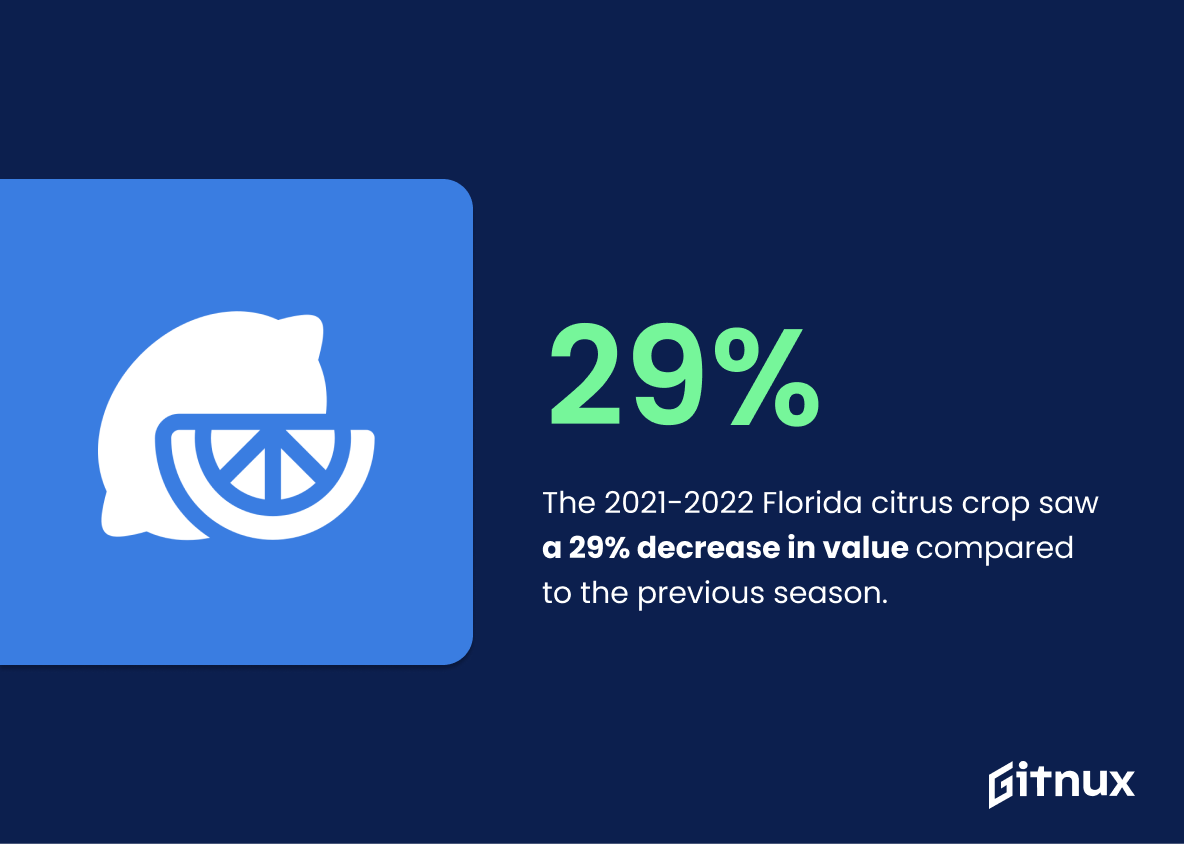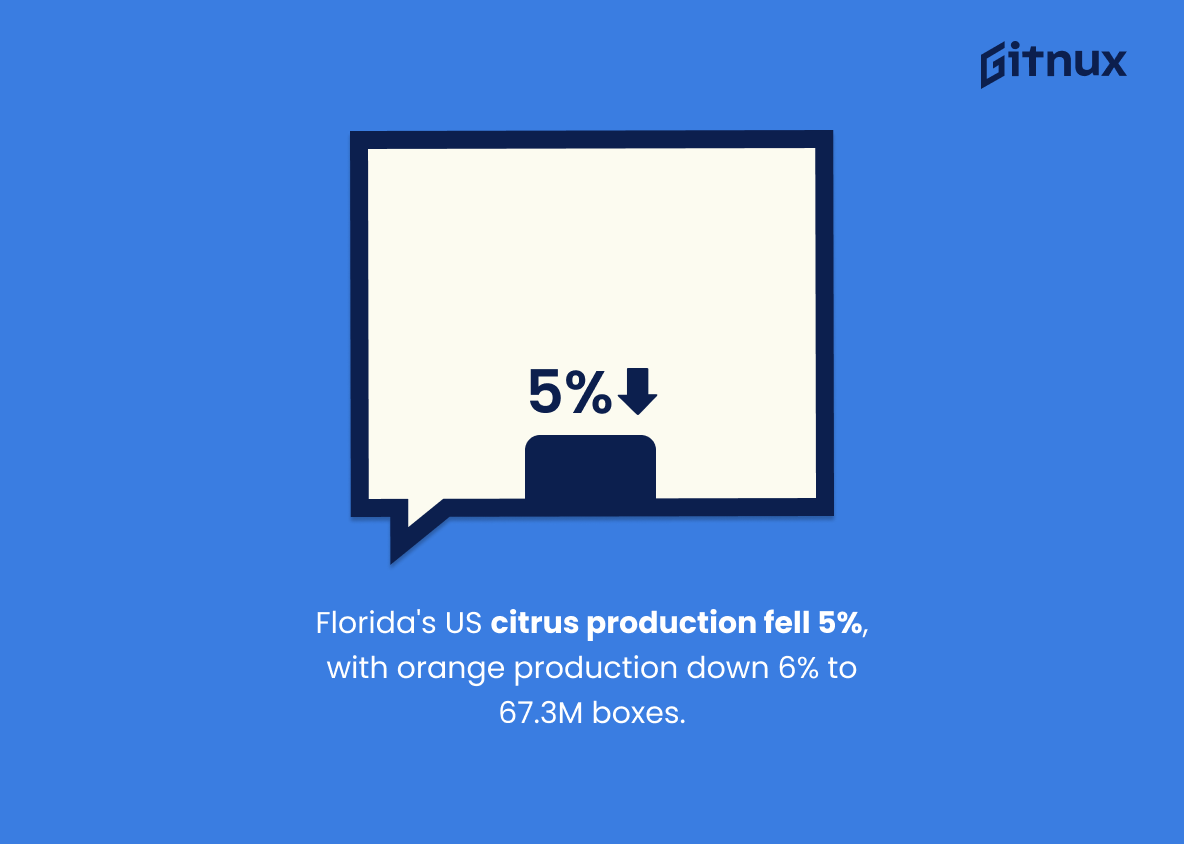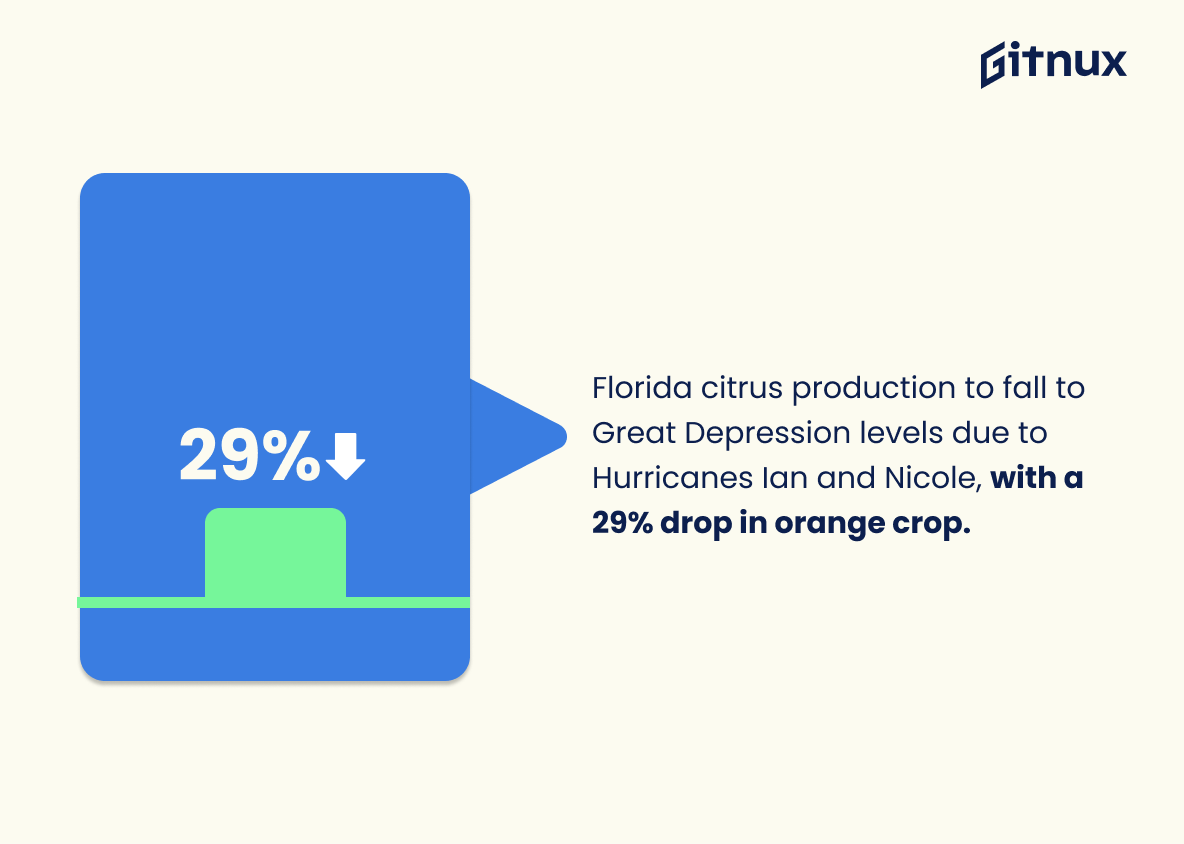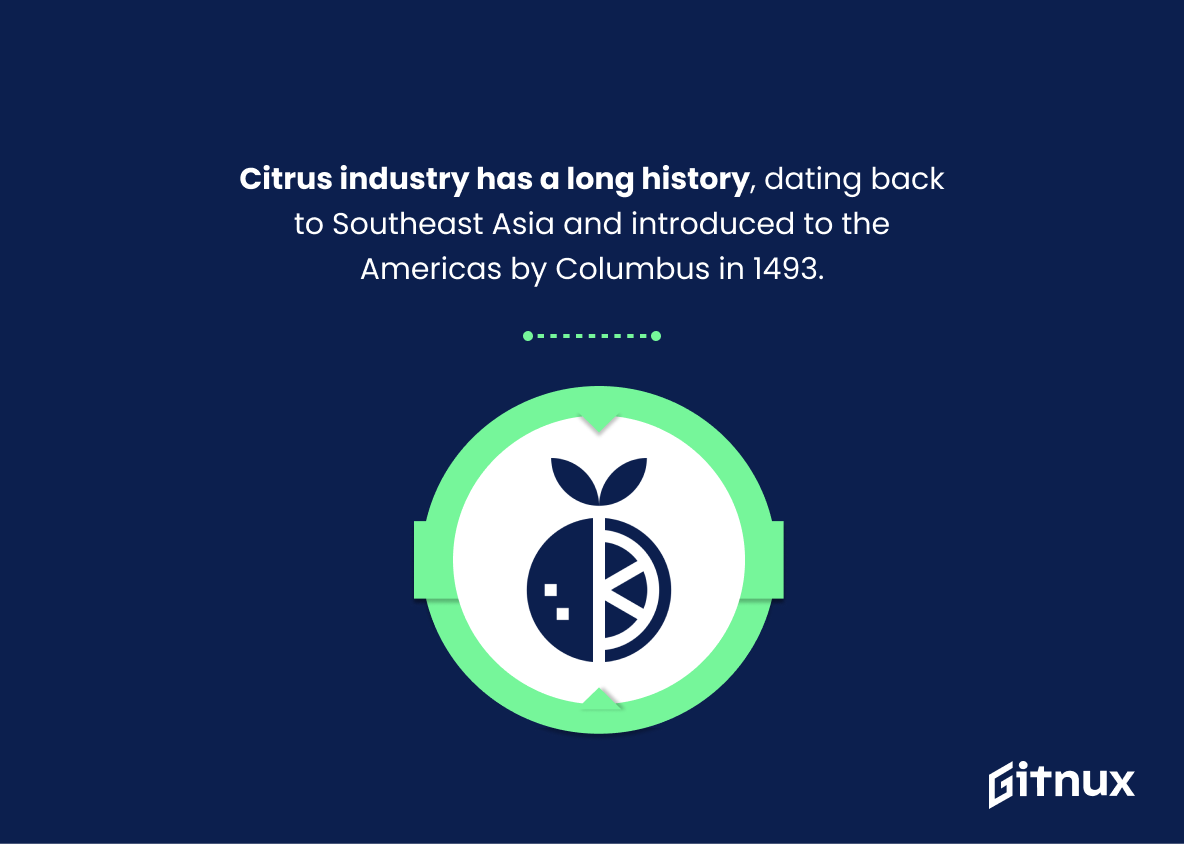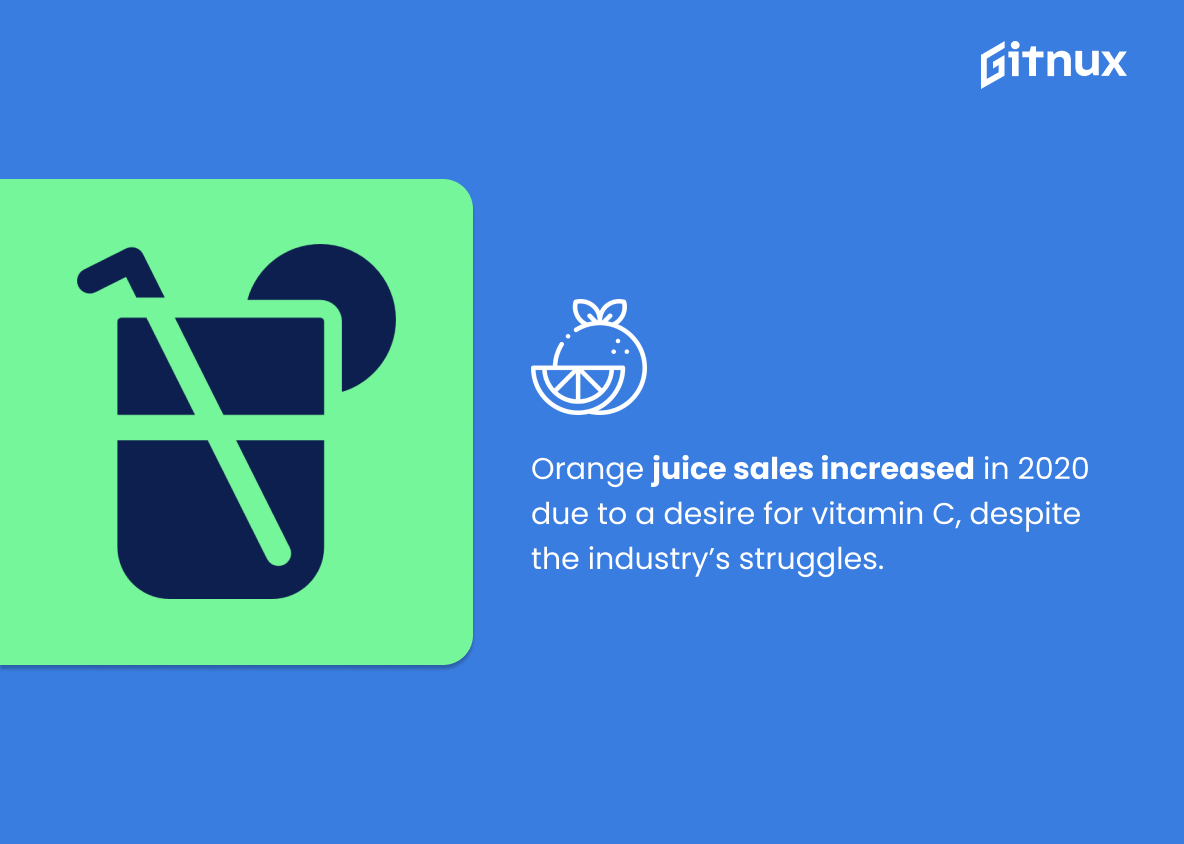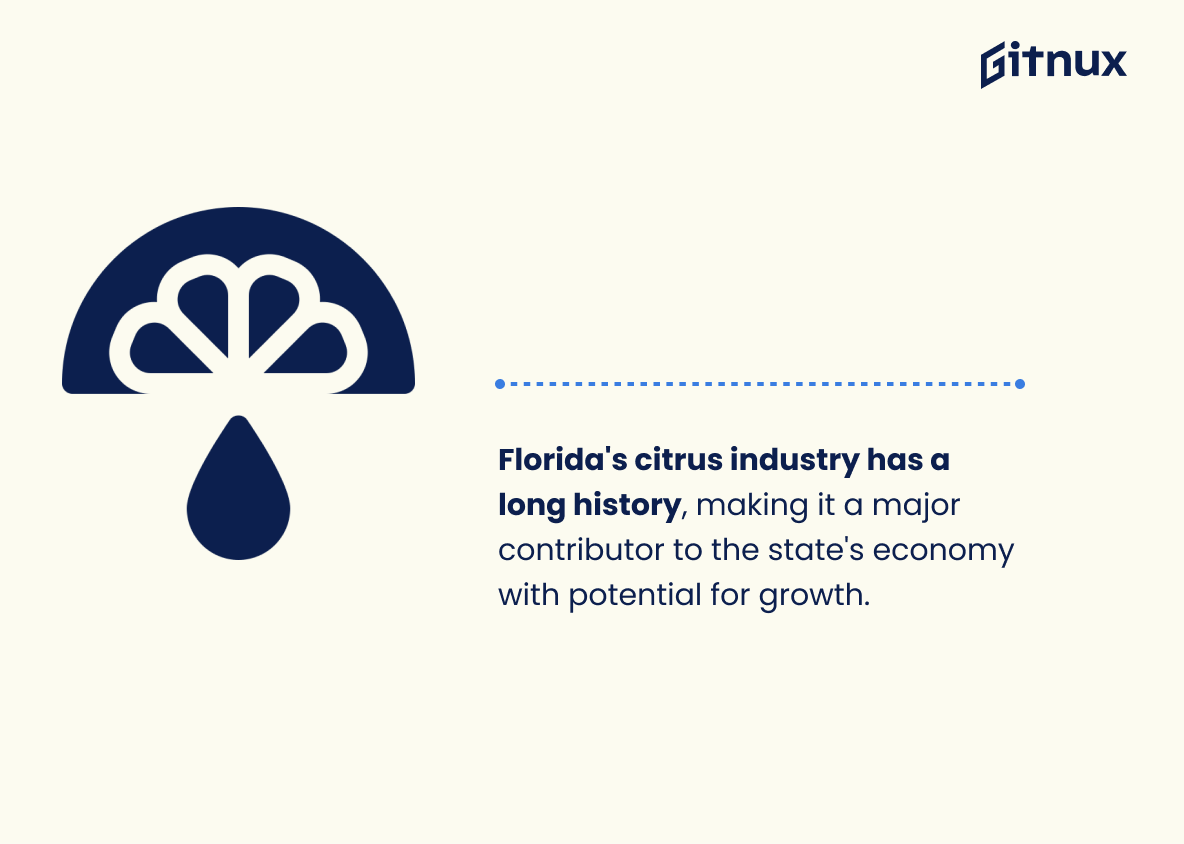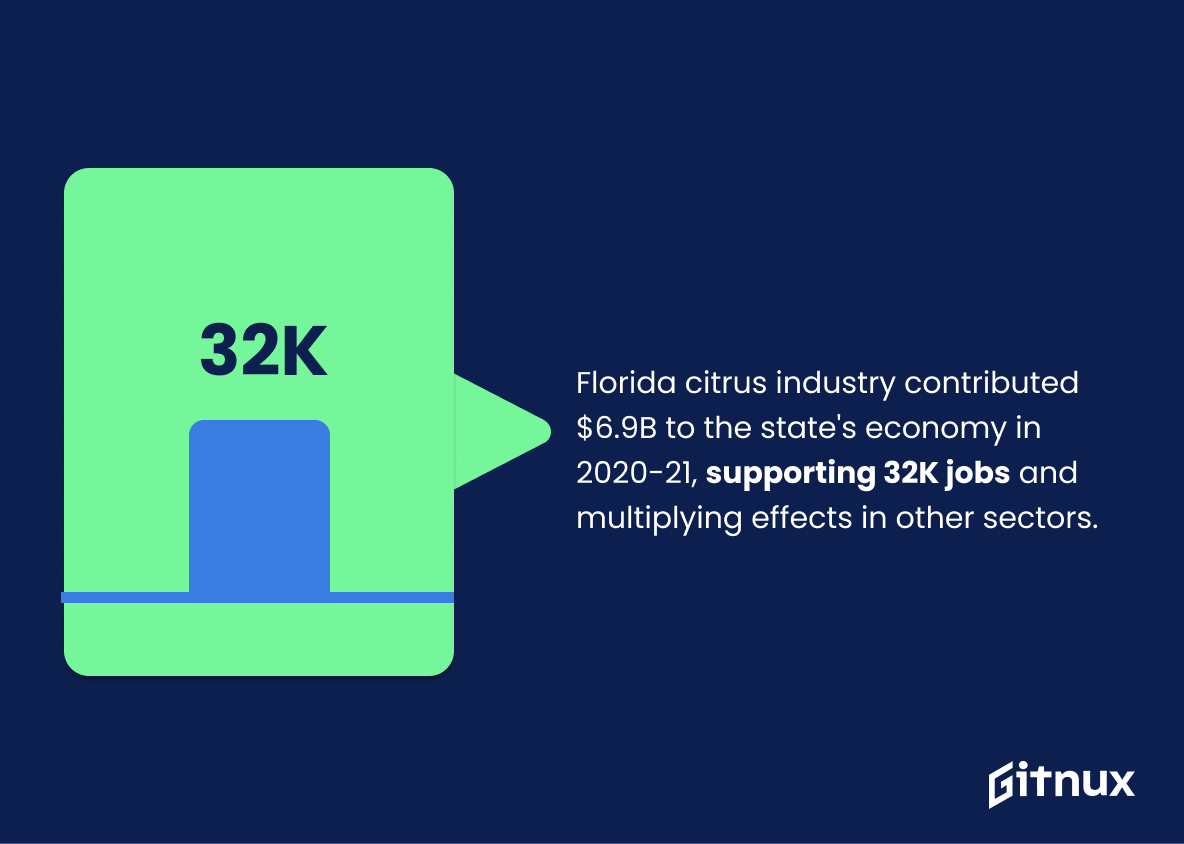Florida’s citrus industry is a major contributor to the state’s economy and is a major source of employment for many Floridians. The industry is also a key part of Florida’s identity, with oranges and grapefruits being a staple in many households. In this blog post, we will take a look at some of the latest statistics related to the Florida citrus industry.
We’ll explore the size of the industry, the types of citrus grown, the economic impact of the industry, and more. We’ll also discuss some of the challenges facing the industry and how the industry is responding to them. So, let’s dive into the data and learn more about the Florida citrus industry.
Florida Citrus Industry: Most Important Statistics
The citrus industry has a long history dating back to Southeast Asia and was introduced to the New World by Christopher Columbus in 1493, leading to commercial growth and job opportunities in Florida by the early 1920s.
The Florida Citrus Industry contributed $6.935 billion to the state’s economy in 2020-21, supporting 32,542 jobs and having significant multiplier effects in other sectors of the economy.
Florida Citrus Industry: Statistics Overview
The 2021-2022 Florida citrus crop saw a 29% decrease in value compared to the previous season.
This shows a decrease in production for oranges and grapefruit, which could lead to a decrease in profits for the Florida citrus industry. This could have a negative impact on the industry, as it could lead to fewer jobs and less money being generated in the state.
Florida’s share of U.S. citrus production decreased by 5%, with all orange production down 6% to 67.3 million boxes.
This shows a decrease in production from the previous year, indicating a decline in the Florida Citrus Industry. This could have a negative impact on the economy of the state, as well as the livelihood of those employed in the industry.
Hurricane Ian caused a 32% drop in Florida’s citrus production for the 2022/23 crop year, potentially having a similar impact on value as Hurricane Irma did.
This demonstrates the potential impact of Hurricane Ian on Florida’s citrus industry. The USDA estimates that the hurricane could cause a 32% drop in citrus production for the 2022/23 crop year, which could have a similar impact on value as Hurricane Irma did.
This could have a significant impact on the state’s citrus industry, which has already been affected by diseases and other factors.
Florida’s citrus industry is facing its lowest production levels since the Great Depression due to the impact of Hurricanes Ian and Nicole, with a 29% drop in orange crop forecasted for the 2022-2023 season.
This matters because the citrus industry is a major economic driver in Florida, and the decreased production levels will have a significant impact on the state’s economy.
The citrus industry has a long history dating back to Southeast Asia and was introduced to the New World by Christopher Columbus in 1493, leading to commercial growth and job opportunities in Florida by the early 1920s.
This shows the long-standing history of the citrus industry in Florida and how it has been a major contributor to the state’s economy for centuries.
Orange juice sales increased in 2020 due to people wanting to boost their immune system with vitamin C, despite the citrus industry’s struggle with citrus greening and Tropicana’s claims to purchase one-third of all Florida’s oranges.
Despite the industry’s struggles, people are still buying oranges and orange juice, which is beneficial for the industry.
Florida’s citrus industry generates a $9 billion annual impact on the state’s economy and employs nearly 76,000 Floridians.
This shows the economic impact of the citrus industry on Florida’s economy. It also highlights the importance of the industry to the state, as it provides jobs for nearly 76,000 Floridians.
Additionally, it shows that Florida is the world’s leading producer of grapefruit and that more than 90% of America’s orange juice is made from Florida-grown oranges, demonstrating the state’s dominance in the citrus industry.
Florida’s citrus industry has a long history, dating back to ancient Asia, and has withstood major setbacks such as the Great Freeze and recent hurricanes, making it a major contributor to the state’s economy with potential for future growth.
This shows the resilience of the industry and its potential for future growth, despite major setbacks. This is important information for potential investors, as it indicates that the industry is a viable option for investment and growth.
The Florida Citrus Industry contributed $6.935 billion to the state’s economy in 2020-21, supporting 32,542 jobs and having significant multiplier effects in other sectors of the economy.
This shows the significant economic impact of the citrus industry in Florida, despite the challenges it has faced.
Conclusion
In conclusion, the Florida citrus industry is a major contributor to the state’s economy, providing jobs and income to thousands of people. Despite the challenges posed by citrus greening and other diseases, the industry has shown remarkable resilience, with production and acreage remaining relatively stable over the past decade.
The industry is also investing in research and development to find solutions to the challenges posed by citrus greening and other diseases, as well as developing new varieties of citrus that are more resistant to disease and pests. With continued investment in research and development, the future of the Florida citrus industry looks bright.
References
1 – https://citrusindustry.net/2022/09/13/title-florida-citrus-value-drops-steeply/
2 – https://www.freshplaza.com/europe/article/9308004/citrus-statistics-report-florida-accounts-for-42-of-total-us-production/
3 – https://www.ers.usda.gov/data-products/chart-gallery/gallery/chart-detail/?chartId=105015#:~:text=Florida’s%20citrus%20production%20fell%20by,the%202022%2F23%20crop%20year.
4 – https://wusfnews.wusf.usf.edu/economy-business/2022-12-10/florida-citrus-industry-faces-worst-season-great-depression
5 – https://dos.myflorida.com/offices/historical-museums/united-connections/foodways/food-cultivation-and-economies/the-citrus-industry-in-florida/#:~:text=It%20was%20not%20until%20the,industry%20entered%20its%20first%20boom.
6 – https://www.sarasotamagazine.com/news-and-profiles/2021/11/florida-oranges
7 – https://www.visitflorida.com/travel-ideas/articles/eat-drink-facts-about-florida-citrus-oranges/
8 – https://www.saundersrealestate.com/properties/citrus/floridas-citrus-history/?callsource=ctm-google&insitesid=1544&gclid=Cj0KCQiAx6ugBhCcARIsAGNmMbgJy_XmfL5JaxwcpqBR9hermyOAHc2gdNWFH36dxQ3Z-FdMSLfCyQUaAjJOEALw_wcB
9 – https://www.morningagclips.com/floridas-citrus-industry-still-a-vital-economic-force-in-state/
